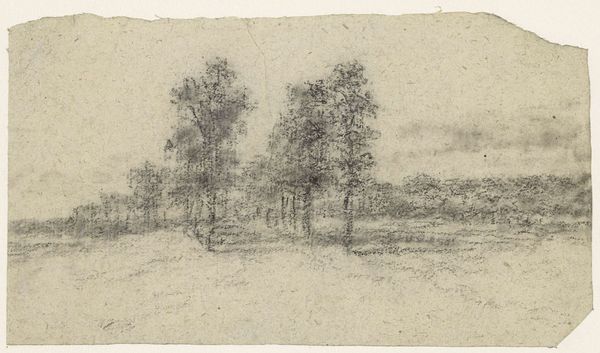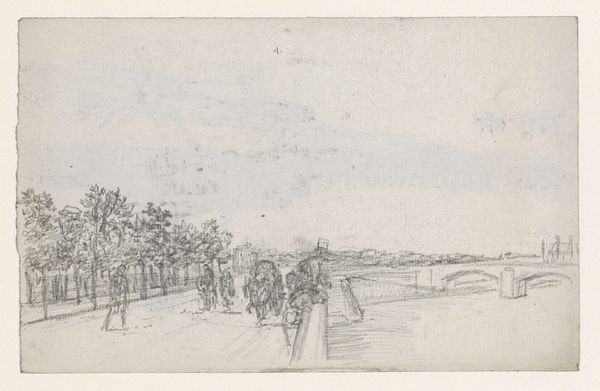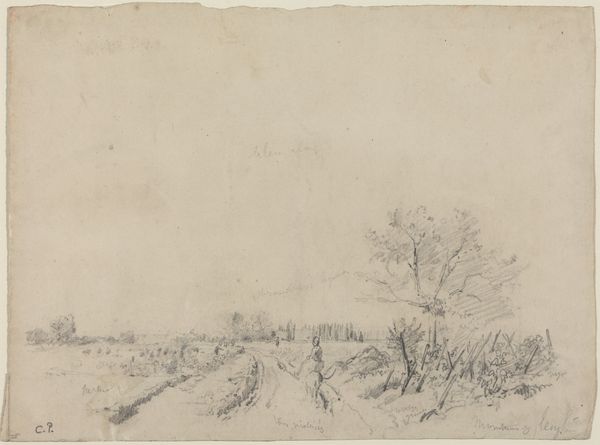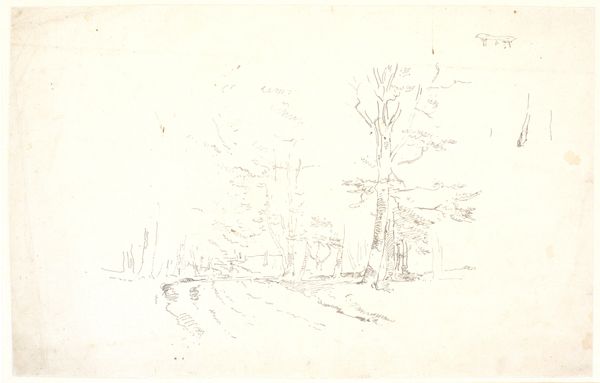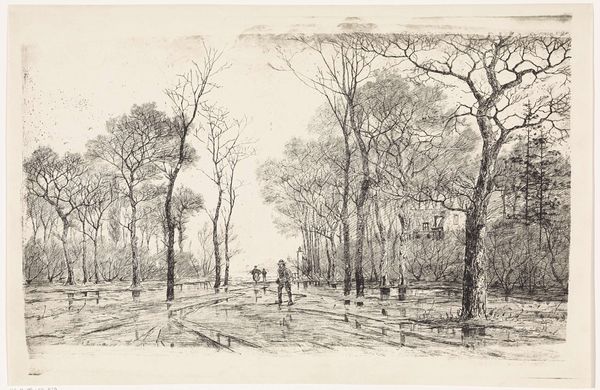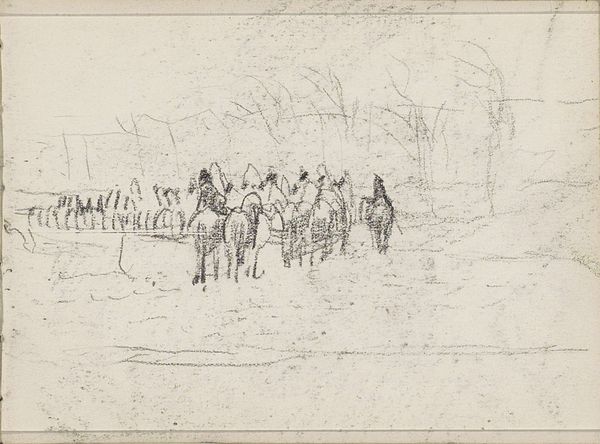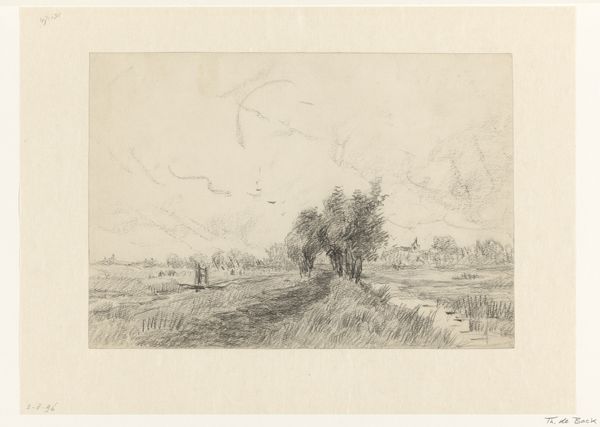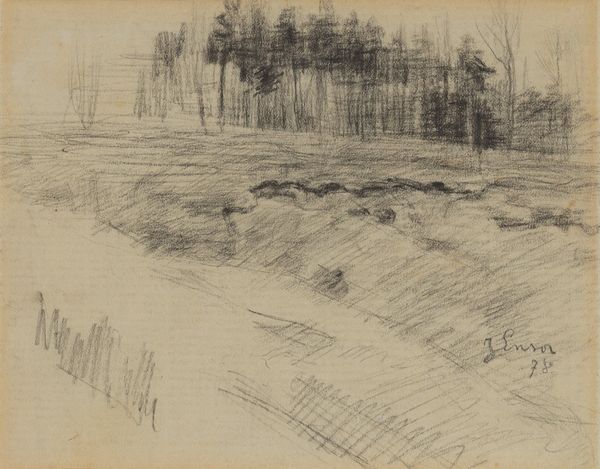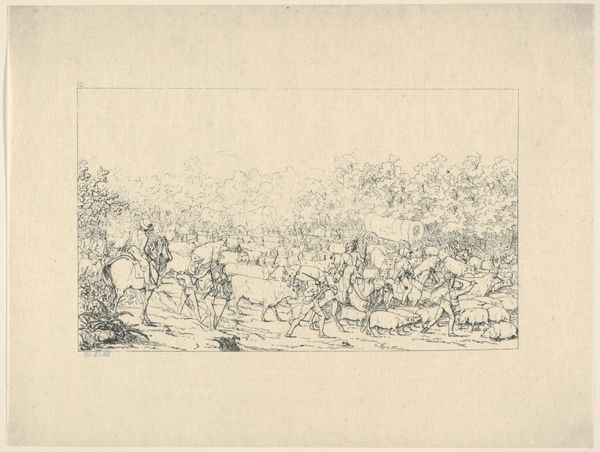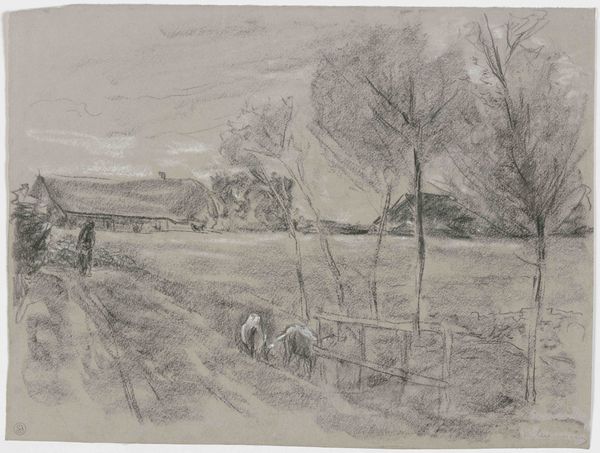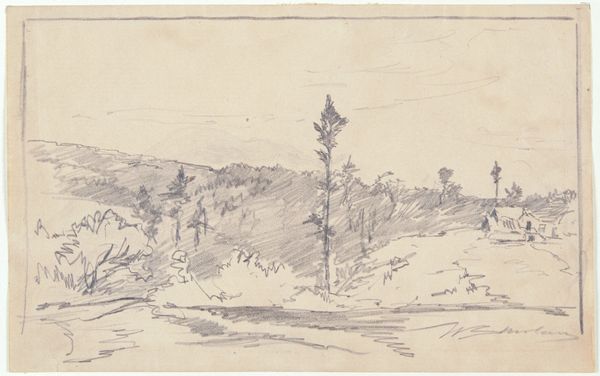
drawing, pencil
#
drawing
#
pen sketch
#
pencil sketch
#
landscape
#
etching
#
forest
#
pencil
#
realism
Dimensions: height 552 mm, width 666 mm
Copyright: Rijks Museum: Open Domain
Editor: Breitner's "Groep ruiters, zich verzamelend op breed bospad," which roughly translates to "Group of riders gathering on a wide forest path," dated somewhere between 1867 and 1923, is an intriguing pencil drawing. The heavy lines suggesting a rutted path immediately grab my attention. What material considerations stand out to you in this piece? Curator: Well, consider the rough pencil strokes. They weren't just representing trees and riders; they were performing labor. The very act of repeatedly scoring the paper with graphite builds texture. Think about the availability of mass-produced paper and pencils during this period – a product of industrialization enabling the creation of such scenes. Editor: So, it's not just about the scene itself, but also about how accessible the *materials* were, which made this kind of everyday subject matter possible? Curator: Precisely. Breitner wasn't painting grand historical narratives. He was capturing a slice of daily life made possible, in part, by the tools at hand. The looseness of the etching suggests speed, capturing a fleeting moment with the materials readily available. Who would these riders have been and how does it affect what is being produced and represented in this drawing? Editor: It does suggest a very immediate, almost journalistic approach. Considering it's in the Rijksmuseum now, its existence also hints at the art market emerging that would consider this as art in the first place. It gives an insight in to what everyday scenes are of material interest. I never thought of it that way before. Curator: Indeed, and it prompts us to question what we value and what makes art in a material sense. Editor: I’ll definitely look at sketches differently now! It makes you think how art reflects not only what we see, but the circumstances around how it was produced and for whom.
Comments
No comments
Be the first to comment and join the conversation on the ultimate creative platform.
